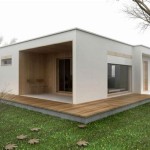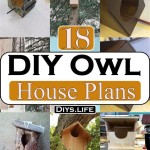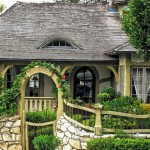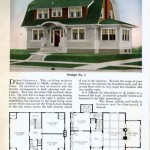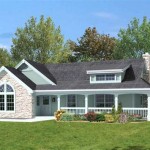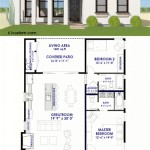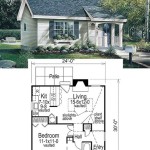Concrete House Design Plans are an integral part of the architectural blueprint for a home where concrete is the primary building material. These plans provide a comprehensive framework for the home’s structure, layout, and overall aesthetics, serving as a guide for construction and design.
By incorporating concrete in a house design, architects can create durable and structurally sound dwellings that stand the test of time. The flexibility of concrete as a building material allows for a wide range of design possibilities, from modern minimalist forms to more intricate and contemporary styles. In residential construction, concrete house design plans offer numerous advantages, including enhanced durability, thermal mass efficiency, and the ability to withstand natural disasters.
As we delve into the main body of this article, we will explore the various aspects of concrete house design plans, including their benefits, design considerations, and the latest trends in contemporary architecture.
When designing a concrete house, it’s crucial to consider various important points to ensure a successful project. Here are 8 key considerations:
- Structural Integrity
- Thermal Efficiency
- Durability & Longevity
- Design Flexibility
- Sustainability
- Cost-Effectiveness
- Seismic Resistance
- Aesthetic Appeal
By carefully considering these factors, architects and homeowners can create concrete house designs that are both functional and visually stunning.
Structural Integrity
Structural integrity is of paramount importance in concrete house design plans. Concrete is renowned for its exceptional compressive strength, making it an ideal material for load-bearing structures. By carefully engineering the concrete mix, reinforcing elements, and overall design, architects can create concrete houses that are highly resistant to various forces and deformations.
- Resistance to Compression: Concrete’s high compressive strength enables it to withstand significant vertical loads, such as the weight of the structure, furniture, and occupants. This characteristic makes concrete an excellent choice for multi-story buildings and other structures that require strong load-bearing capabilities.
- Tensile Strength Reinforcement: While concrete is strong in compression, it is relatively weak in tension. To address this, concrete house design plans often incorporate tensile reinforcement materials, such as steel rebar or fibers, to enhance the structure’s resistance to tensile forces. These reinforcing elements work in conjunction with the concrete to create a composite material with improved overall strength and durability.
- Seismic Resistance: Concrete houses are inherently resistant to seismic forces due to the material’s inherent mass and rigidity. By incorporating additional seismic design features, such as shear walls, moment frames, and base isolation systems, architects can further enhance the structure’s ability to withstand earthquakes and other dynamic loads.
- Durability and Longevity: Concrete is a highly durable material that can withstand harsh weather conditions, moisture, and wear and tear. Proper design and construction techniques, such as using high-quality concrete mixes, proper curing procedures, and protective coatings, can further extend the lifespan of concrete structures, making them a long-lasting and low-maintenance option.
By prioritizing structural integrity in concrete house design plans, architects can create safe, resilient, and enduring homes that provide peace of mind and longevity for the occupants.
Thermal Efficiency
Thermal efficiency is a crucial consideration in concrete house design plans, as it directly impacts the indoor comfort and energy consumption of the building. Concrete’s thermal mass and insulating properties make it an excellent material for achieving thermal efficiency.
- High Thermal Mass: Concrete has a high thermal mass, meaning it can absorb and store a significant amount of heat energy. This property helps regulate indoor temperatures by absorbing excess heat during warm periods and releasing it gradually during cooler periods. This thermal buffering effect reduces temperature fluctuations and creates a more stable and comfortable indoor environment.
- Insulating Properties: Concrete’s dense and non-porous structure provides good insulating properties. Properly designed concrete walls and roofs can effectively resist heat transfer, reducing the need for additional insulation materials. This can result in lower energy consumption for heating and cooling, especially in extreme climates.
- Passive Solar Design: Concrete’s thermal mass can be utilized in passive solar design strategies. By incorporating large south-facing windows and strategically placing concrete elements, architects can harness solar energy to heat the house during winter months. The concrete absorbs and stores the solar heat during the day and releases it gradually at night, reducing the reliance on conventional heating systems.
- Reduced Air Infiltration: Concrete’s monolithic construction and airtightness minimize air infiltration, which can lead to heat loss or gain. Proper detailing and sealing of joints and openings ensure that the building envelope is well-sealed, preventing uncontrolled air movement and improving thermal performance.
By incorporating these thermal efficiency strategies into concrete house design plans, architects can create homes that are not only comfortable and energy-efficient but also contribute to a more sustainable built environment.
Durability & Longevity
Durability and longevity are key considerations in concrete house design plans, as they directly impact the lifespan and resilience of the structure.
- Resistance to Weathering and Deterioration: Concrete is highly resistant to weathering and deterioration caused by environmental factors such as rain, snow, wind, and UV rays. Its dense and non-porous structure prevents moisture penetration and minimizes the risk of corrosion and decay, ensuring the longevity of the building.
- Fire Resistance: Concrete is a naturally fire-resistant material, providing excellent protection against the spread of flames and heat. Concrete structures can withstand high temperatures for extended periods, offering peace of mind and enhanced safety for the occupants.
- Pest and Insect Resistance: Concrete’s solid and impervious nature makes it highly resistant to pests and insects. Unlike wood or other organic materials, concrete does not provide a suitable environment for pests to thrive, contributing to the overall durability and hygiene of the house.
- Low Maintenance Requirements: Concrete houses require minimal maintenance compared to other types of structures. The durable nature of concrete means that it does not require frequent painting, repairs, or replacements, reducing the long-term costs and upkeep associated with the building.
By incorporating durability and longevity considerations into concrete house design plans, architects can create homes that stand the test of time, providing a safe, comfortable, and low-maintenance living environment for generations to come.
Design Flexibility
Concrete house design plans offer remarkable design flexibility, allowing architects to create homes that are both aesthetically pleasing and highly functional. Concrete’s inherent moldability and adaptability make it suitable for a wide range of architectural styles, from classic to contemporary, and even organic forms.
Architects can manipulate the shape, texture, and color of concrete to achieve unique and visually striking designs. By incorporating curves, angles, or intricate patterns into the concrete elements, they can create facades and interior spaces that are both visually appealing and structurally sound.
Concrete’s versatility extends to its ability to integrate seamlessly with other materials, such as glass, wood, and steel. This allows architects to combine the strength and durability of concrete with the aesthetic qualities of other materials, creating visually dynamic and architecturally interesting structures.
Moreover, concrete’s flexibility enables the creation of innovative and functional spaces. Architects can design concrete houses with open floor plans, soaring ceilings, and expansive windows, taking full advantage of the material’s structural capabilities to create light-filled and spacious living environments.
The design flexibility of concrete house design plans empowers architects to translate their creative visions into reality, resulting in homes that are not only visually stunning but also highly adaptable to the needs and preferences of the occupants.
Sustainability
Sustainability is a key consideration in modern concrete house design plans. Concrete, when used responsibly, can contribute to a more sustainable built environment. Here are four main ways concrete house design plans promote sustainability:
1. Durability and Longevity:
Concrete structures are renowned for their exceptional durability and longevity, lasting for decades with minimal maintenance. This reduces the need for frequent repairs, renovations, and replacements, conserving resources and minimizing the environmental impact associated with construction and demolition activities.
2. Energy Efficiency:
Concrete’s thermal mass and insulating properties contribute to energy efficiency in concrete houses. The thermal mass helps regulate indoor temperatures, reducing the demand for heating and cooling systems. Additionally, concrete’s airtightness minimizes air infiltration, further enhancing energy efficiency and reducing greenhouse gas emissions.
3. Reduced Embodied Carbon:
Concrete has a relatively high embodied carbon footprint compared to some other building materials. However, innovative techniques, such as using recycled concrete aggregates and optimizing concrete mix designs, can significantly reduce the embodied carbon of concrete structures. By incorporating these sustainable practices into concrete house design plans, architects can minimize the environmental impact associated with the production and transportation of concrete.
4. Waste Reduction:
Concrete’s monolithic construction and durability reduce waste generated during construction and demolition. Unlike materials that require frequent replacement, concrete structures can last for generations, minimizing the amount of construction and demolition waste sent to landfills.
By embracing sustainable practices in concrete house design plans, architects can create homes that are not only durable and energy-efficient but also contribute to a more sustainable and environmentally friendly built environment.
Cost-Effectiveness
Concrete house design plans offer several advantages that contribute to cost-effectiveness in the long run. The durability and longevity of concrete structures significantly reduce maintenance and repair costs over the lifespan of the building. Concrete’s resistance to weathering, fire, and pests minimizes the need for costly repairs and replacements, leading to substantial savings for homeowners.
Concrete’s thermal efficiency also contributes to cost-effectiveness. The thermal mass of concrete helps regulate indoor temperatures, reducing the reliance on heating and cooling systems. This can lead to lower energy bills and long-term savings on energy consumption.
Additionally, concrete’s fire resistance can reduce insurance premiums for concrete houses compared to homes built with more flammable materials. The lower risk of fire damage can result in significant savings over the life of the building.
While the initial cost of concrete construction may be higher than some other building materials, the long-term cost savings associated with durability, energy efficiency, and lower maintenance often make concrete house design plans a cost-effective choice for homeowners.
Overall, concrete house design plans offer a balance of upfront costs and long-term savings, making them a cost-effective option for building durable, energy-efficient, and low-maintenance homes.
Seismic Resistance
In regions prone to earthquakes, seismic resistance is a crucial consideration in concrete house design plans. Concrete’s inherent strength and durability make it an excellent material for resisting seismic forces and protecting the occupants during an earthquake.
Concrete structures can withstand significant seismic forces due to their high compressive strength and ductility. Ductility refers to the material’s ability to deform under stress without losing its strength. This property allows concrete structures to absorb and dissipate seismic energy, reducing the risk of catastrophic failure.
To enhance seismic resistance, concrete house design plans incorporate various structural elements and techniques. These include reinforced concrete shear walls, moment frames, and base isolation systems. Shear walls are vertical structural elements that resist lateral forces, while moment frames are horizontal elements that transfer seismic forces to the foundation. Base isolation systems are designed to decouple the building from the ground, reducing the transmission of seismic forces to the structure.
Proper detailing and construction practices are essential to ensure the seismic resistance of concrete houses. Engineers carefully design the reinforcement layout, concrete mix, and construction joints to optimize the structure’s performance under seismic loads. Regular inspections and maintenance are also crucial to maintain the integrity of the structure and its seismic resistance over time.
By incorporating seismic resistance considerations into concrete house design plans, architects and engineers can create safe and resilient homes that can withstand the forces of an earthquake, providing peace of mind and protection to the occupants.
Aesthetic Appeal
Concrete house design plans offer a wide range of aesthetic possibilities, allowing architects to create homes that are both visually striking and timeless. Concrete’s versatility and adaptability make it suitable for a variety of architectural styles, from classic to contemporary and even organic forms.
Architects can manipulate the texture, color, and shape of concrete to create unique and visually appealing facades. Exposed concrete surfaces can be left with a smooth finish or textured using formwork or other techniques. Pigments can be added to the concrete mix to achieve a desired color, or stains and coatings can be applied to the surface to enhance its aesthetic appeal.
Concrete’s compatibility with other materials, such as glass, wood, and steel, further expands the aesthetic possibilities. Architects can combine concrete elements with other materials to create visually dynamic and architecturally interesting structures. For example, large glass windows can be incorporated into concrete walls to maximize natural light and create a connection between the indoors and outdoors.
The monolithic nature of concrete allows for the creation of seamless transitions between interior and exterior spaces. Concrete floors, walls, and ceilings can flow seamlessly into one another, creating a sense of continuity and spaciousness. This fluidity of form gives architects the freedom to design homes that are both aesthetically pleasing and highly functional.
By embracing the aesthetic possibilities of concrete house design plans, architects can create homes that are not only durable and sustainable but also visually stunning and inspiring. Concrete’s versatility and adaptability make it an ideal material for architects to translate their creative visions into reality.










Related Posts

